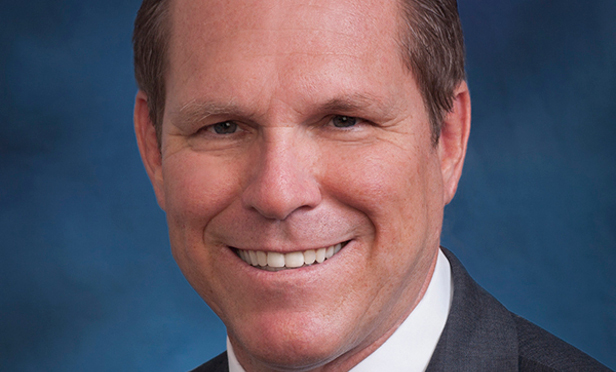 Jeff Moore is a senior managing director and heads retail services for Southern California at CBRE.
Jeff Moore is a senior managing director and heads retail services for Southern California at CBRE.
Apparel and beauty retailers are driving retail spending activity in Southern California. Residents in the region spend $15 billion annually on apparel and an additional $5.6 billion on beauty products, according to research from CBRE. Los Angeles is a leader in the region, accounting for more than $8 billion in apparel spending, while Orange County and San Diego each account for $3 billion in apparel spending.
“Southern California is always on the edge of clothing trends and is known nationally and internationally as a trendsetter,” Jeff Moore, senior managing director at CBRE, tells GlobeSt.com. “We are an international shopping destination, and apparel retailers want to capitalize on both the local consumer as well as other US and foreign visitors to the area. Our population density, income levels and active healthy lifestyle are conducive for fashion and apparel sales.”
Los Angeles apparel spending—which is significantly higher than Orange and San Diego Counties—is also driven by the entertainment industry. “We are the entertainment capital of the world. Hollywood and social media, Instagram in particular, play a role with consumers and millennials as their fashion trends are seen by others and influence shopping habits,” adds Moore. “Lastly, high profile retail hubs like South Coast Plaza, Rodeo Drive and Irvine Spectrum are recognized around the world. Southern California's high-profile and trend-setting image play a distinct role in the demand for space by retailers in this sector.”
These apparel sales make up a mixture of online and in-store sales. According to the CBRE research and adults surveyed by ESRI, 6.3 million adults or 45% of Southern California's adult population have shopped for clothing in a department store in the last six months. By comparison, the same survey shows that 17% of adults or 2.3 million people purchased clothes online in the last six months. “Soft goods retailers will likely be more risk averse and focus more on class-A locations and urban markets where density and disposable income are more favorable,” says Moore. “People still need and want fashion and in Southern California maybe more so than most of the world.”
Looking ahead into 2019, Moore expects apparel spending to remain strong throughout the region, and he expects brick-and-mortar to continue to play a major role in apparel shopping activity. “I am optimistic for apparel sales in 2019 . Fashion is not going away and retailers are figuring out their e-commerce and omnichannel strategy to create customer loyalty, ease and convenience of shopping,” he adds. “This may seem surprising given the prevalence of online shopping today, but the reality is that many consumers in our region still prefer to see and feel—in other words experience—a product before purchasing it sight unseen.”
© Touchpoint Markets, All Rights Reserved. Request academic re-use from www.copyright.com. All other uses, submit a request to [email protected]. For more inforrmation visit Asset & Logo Licensing.






